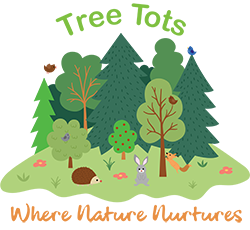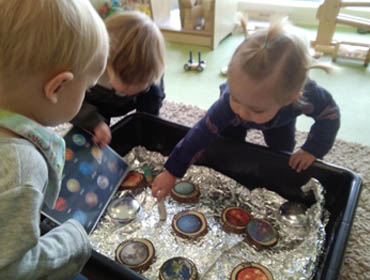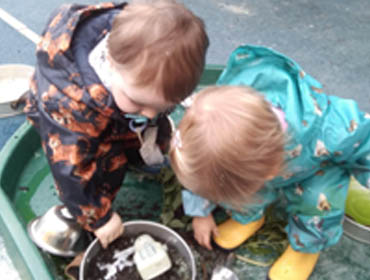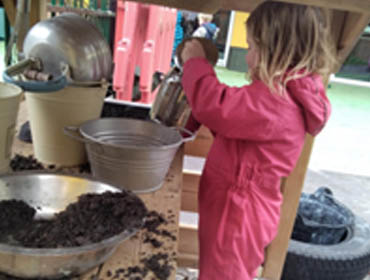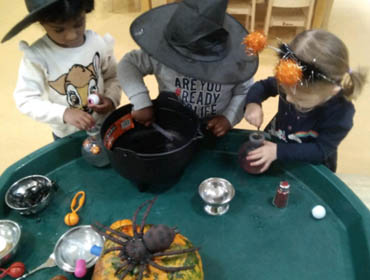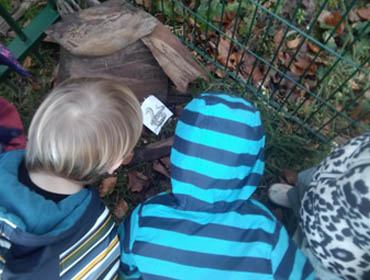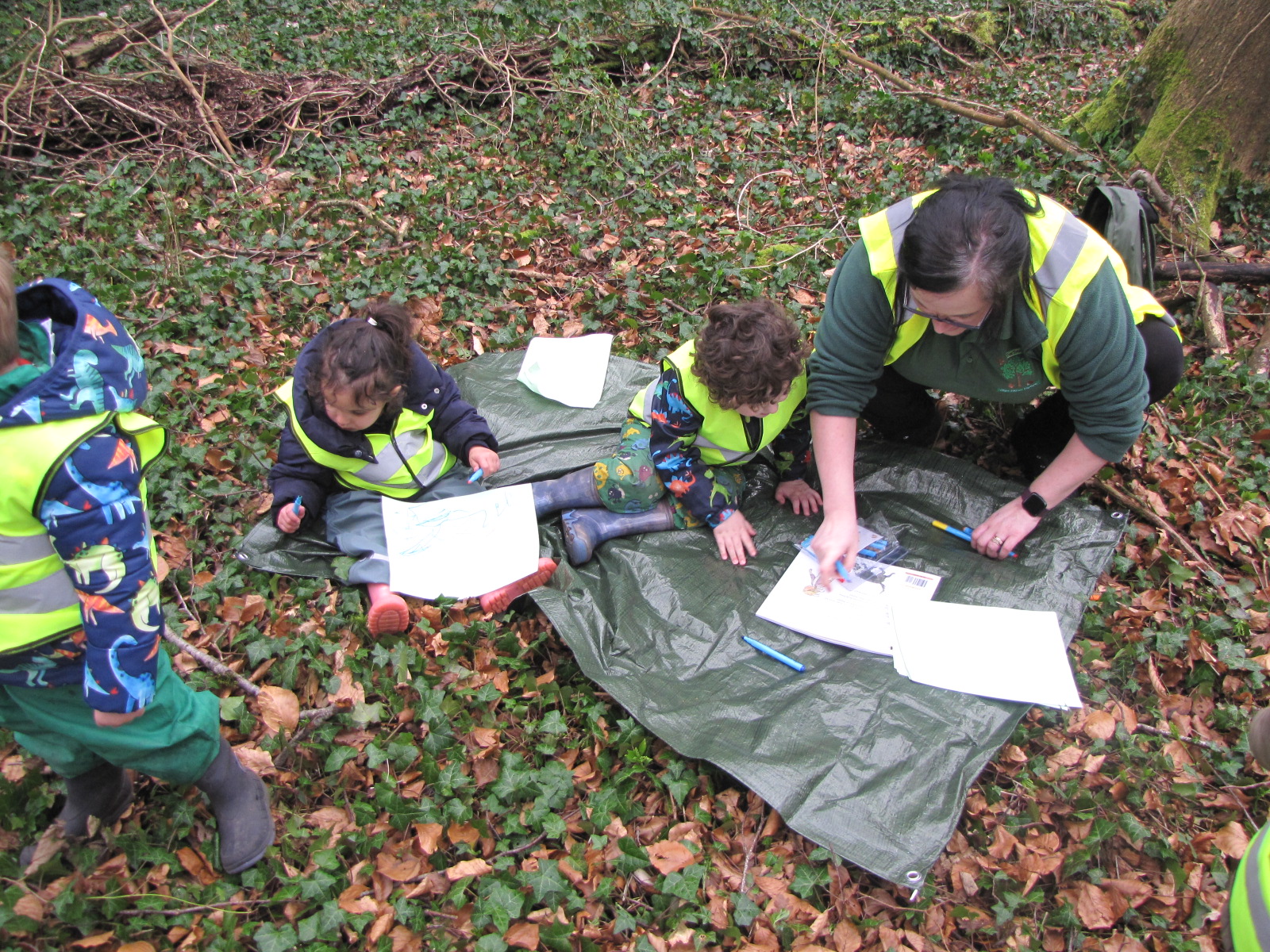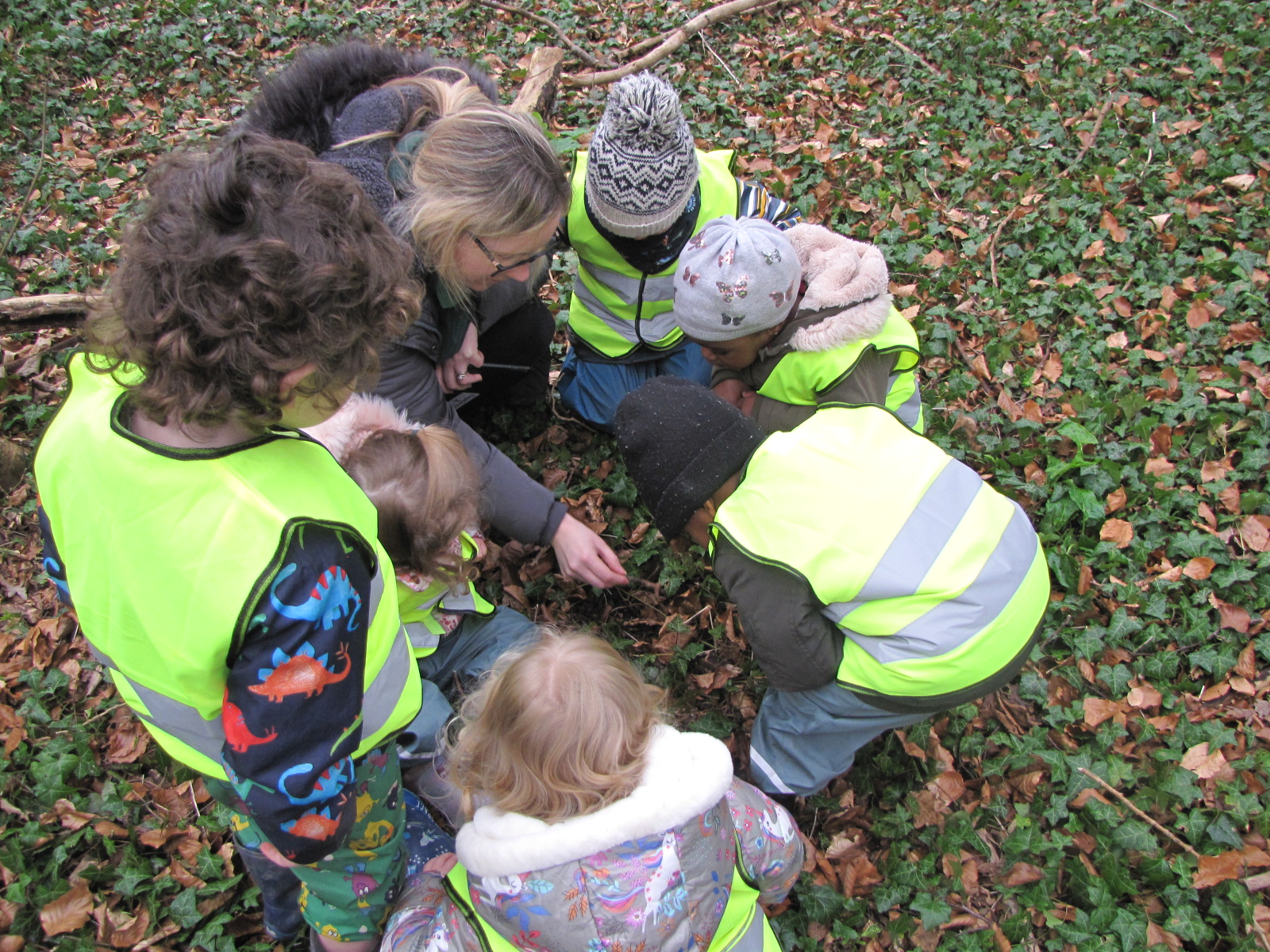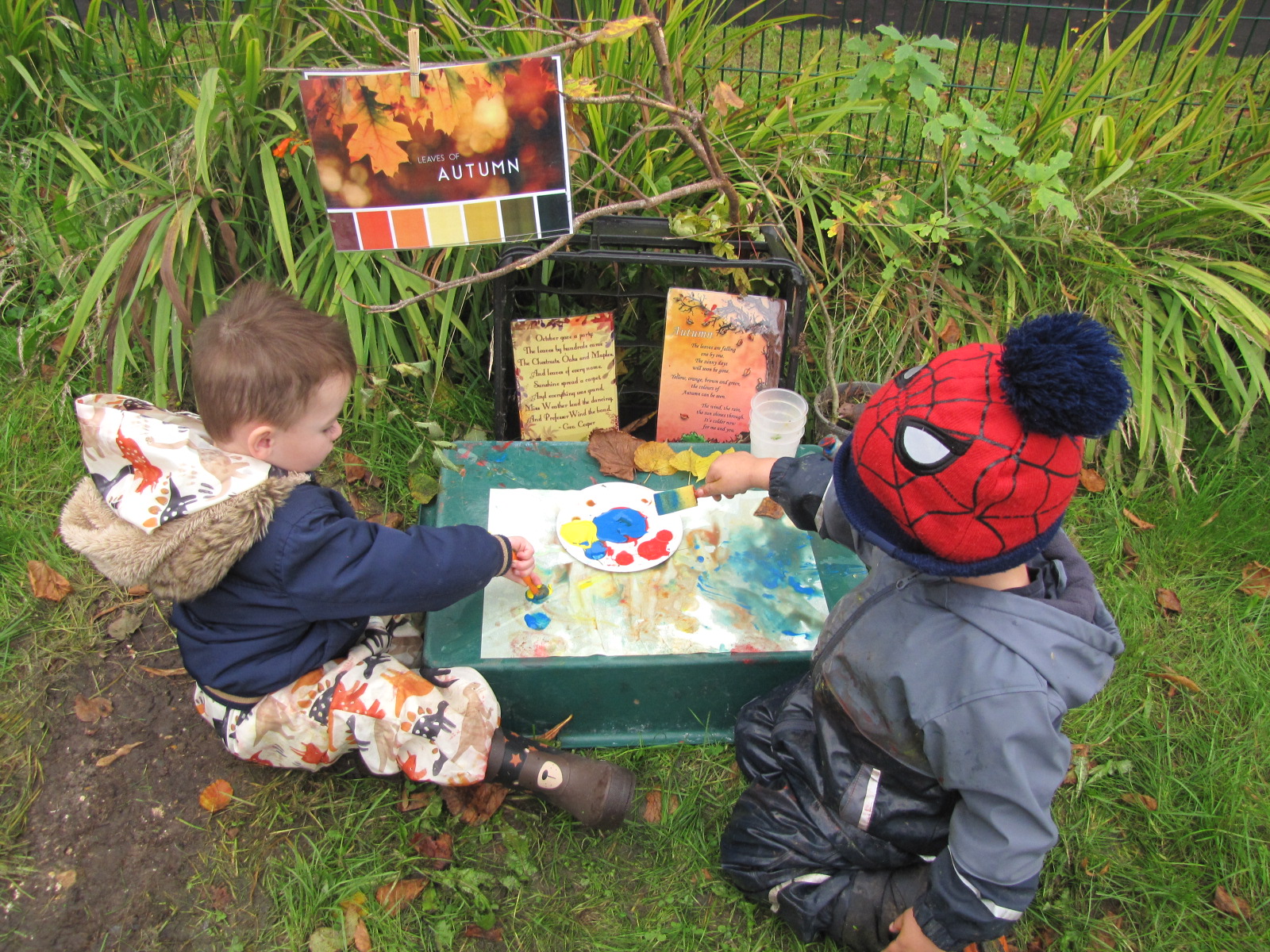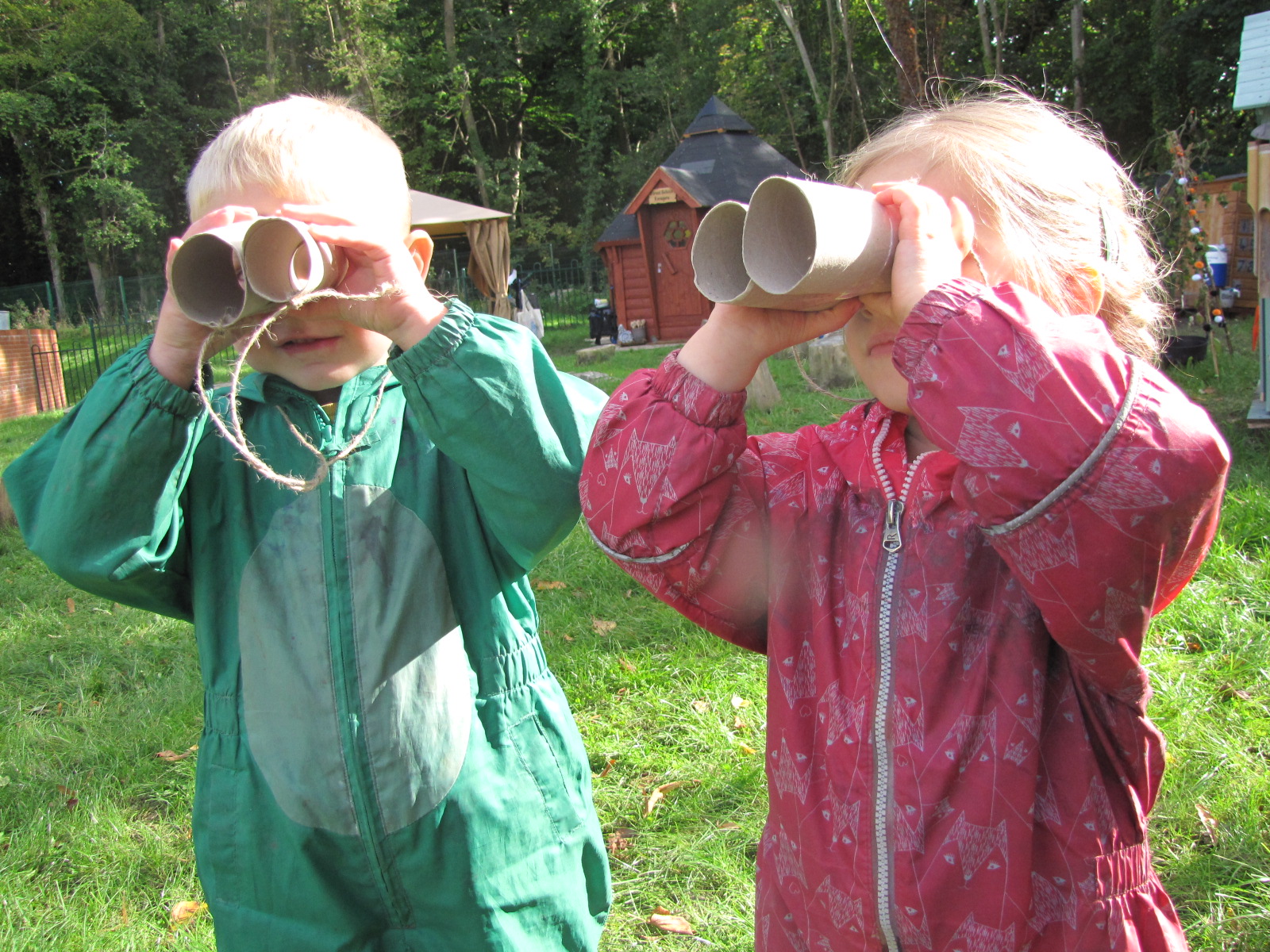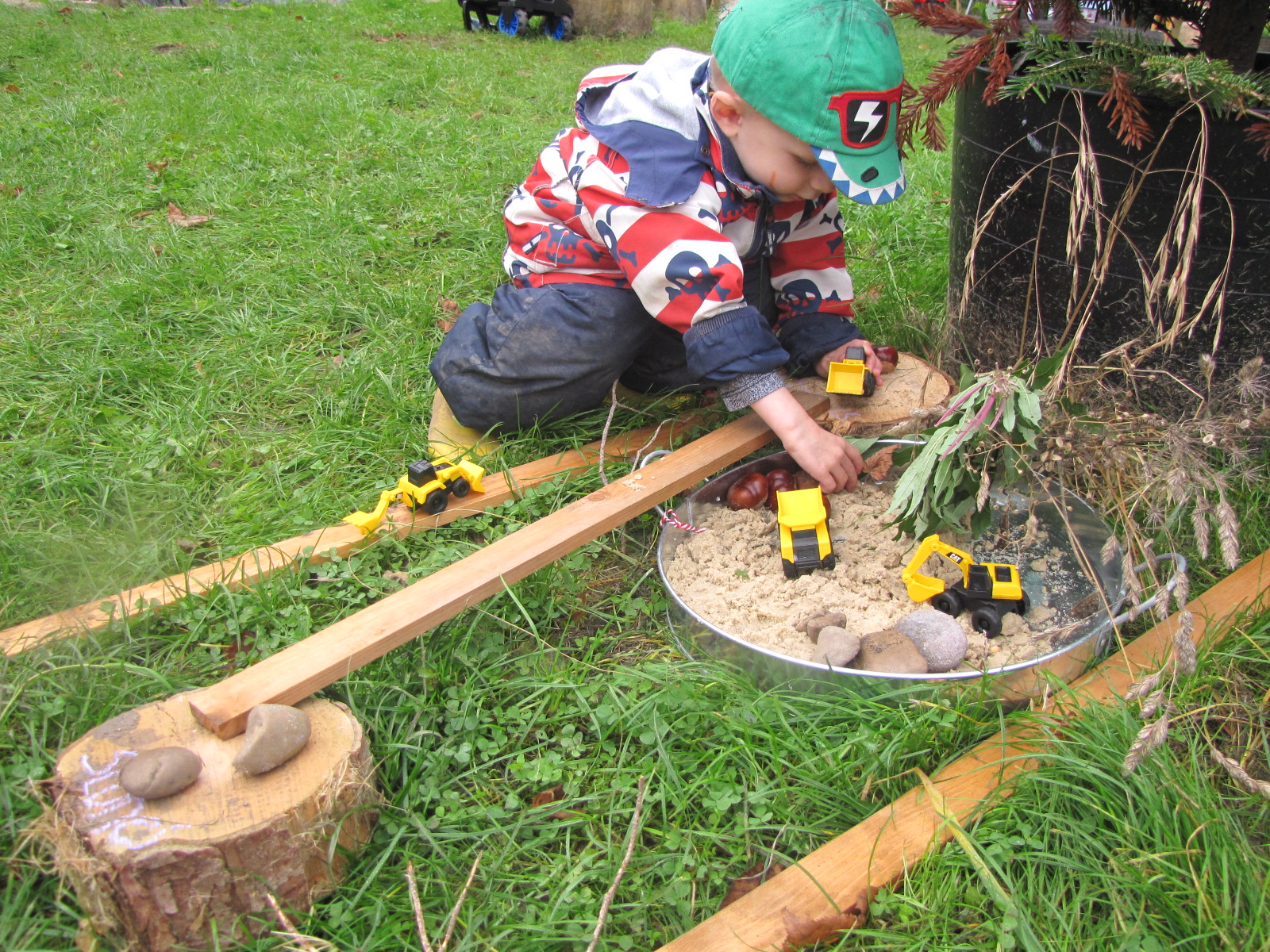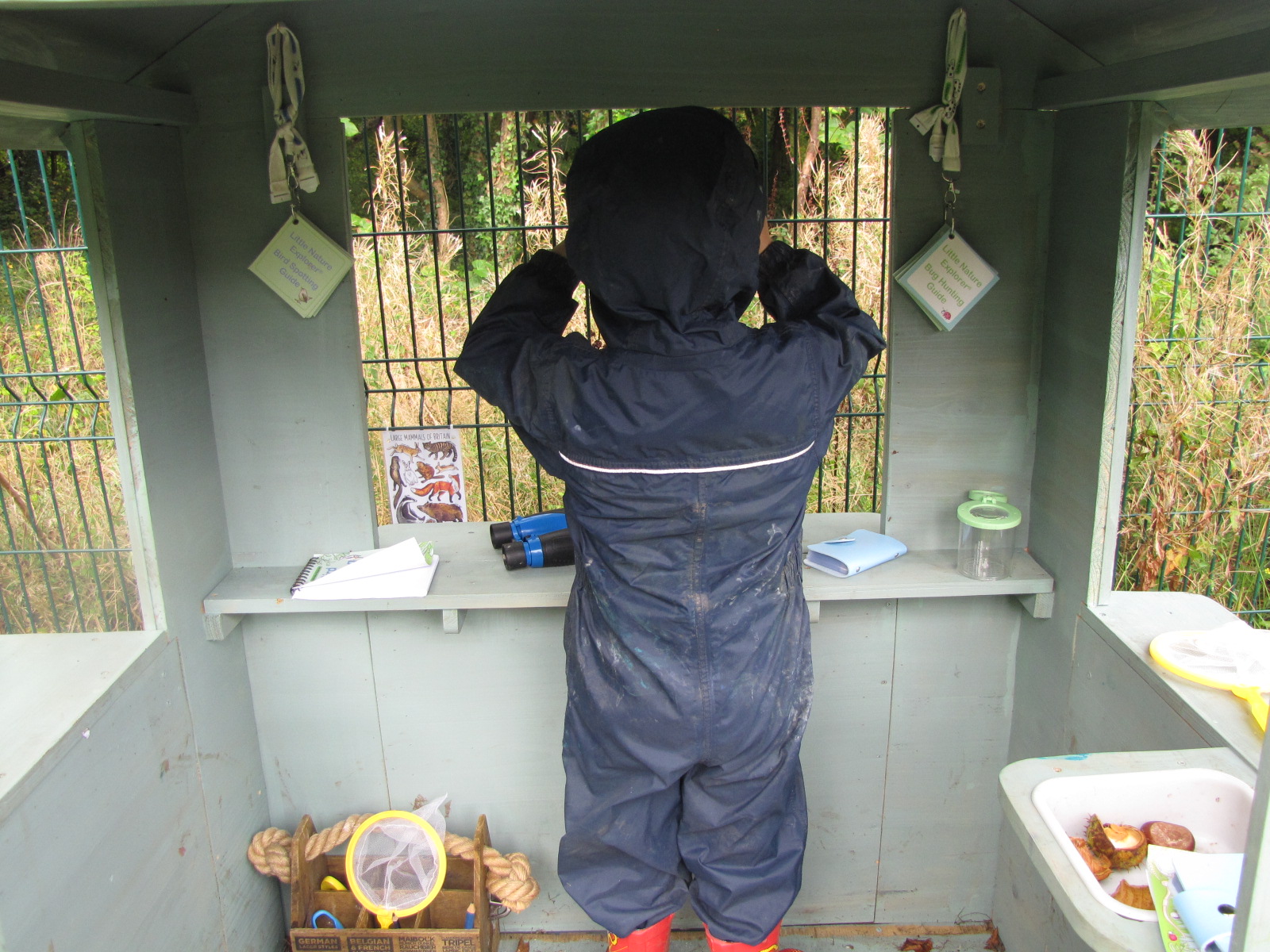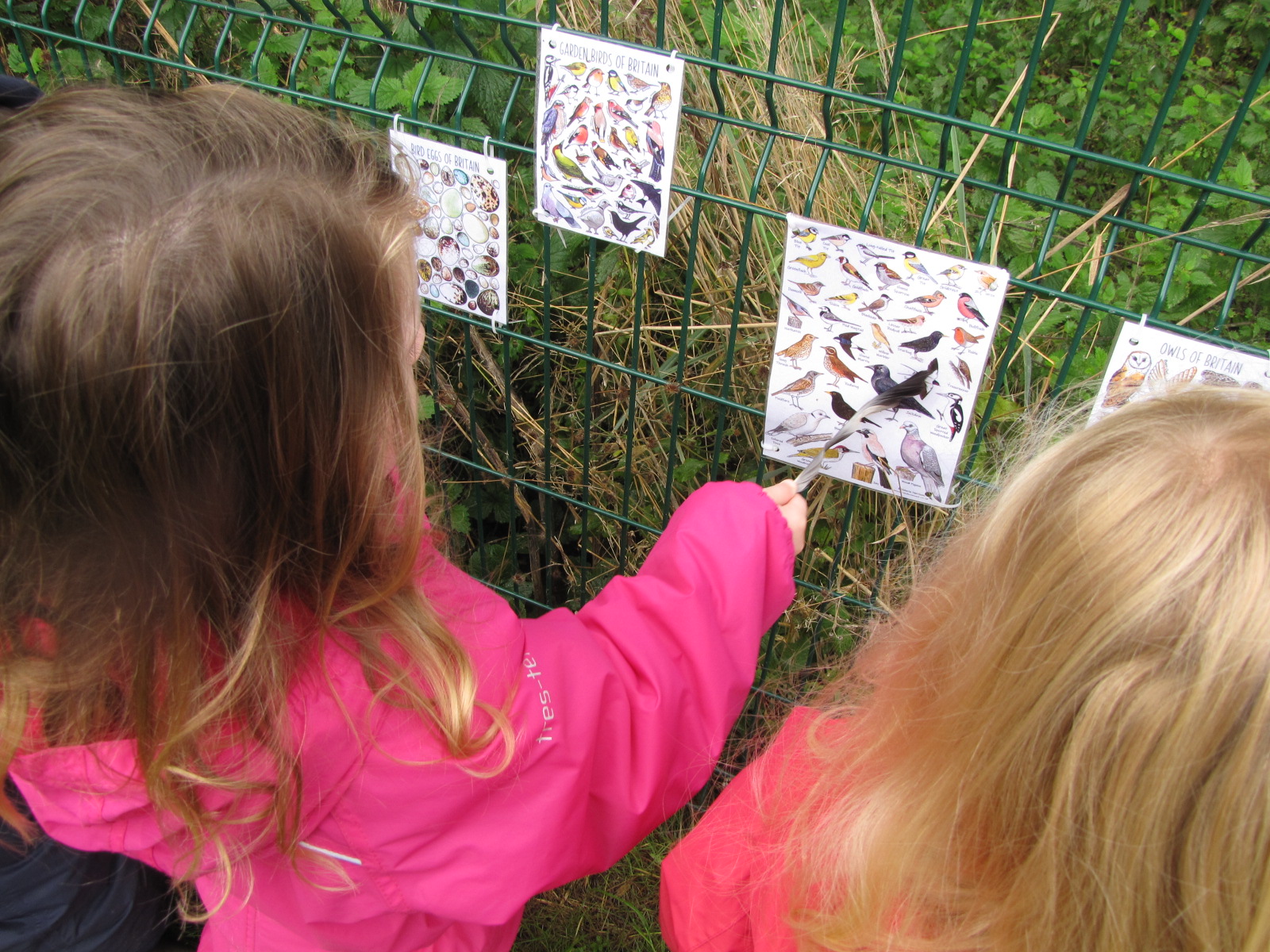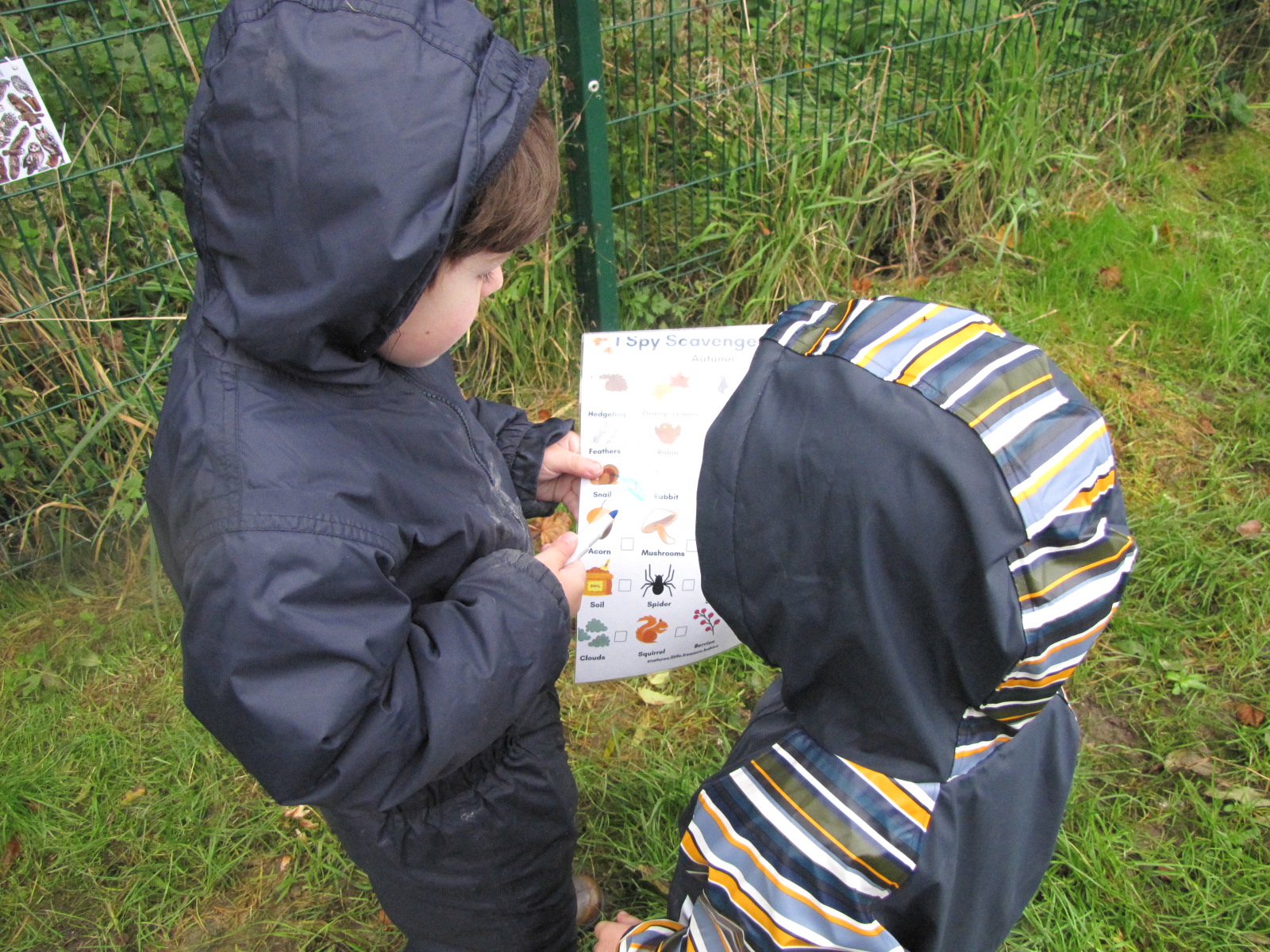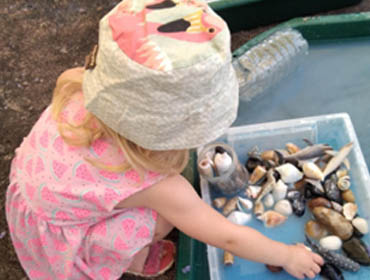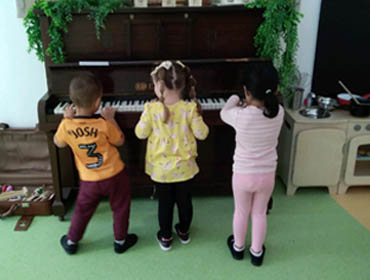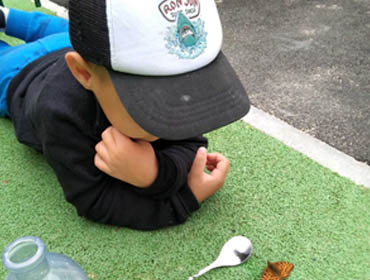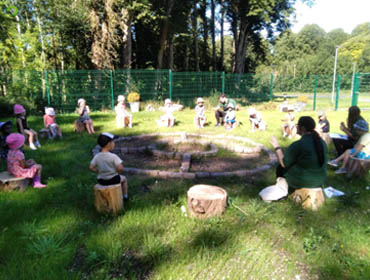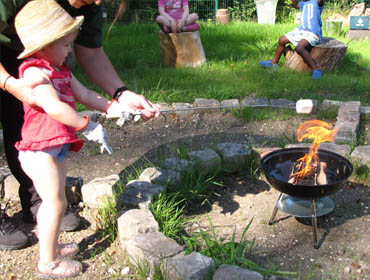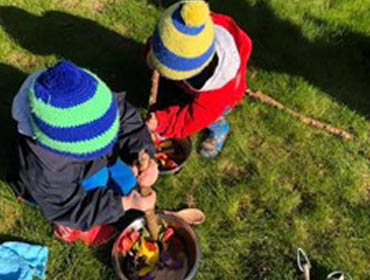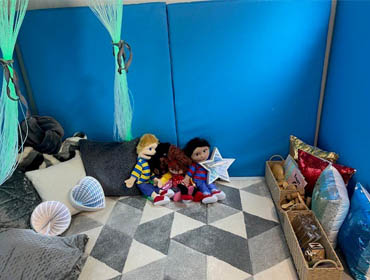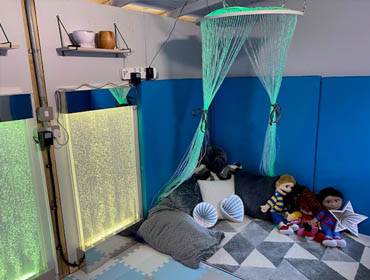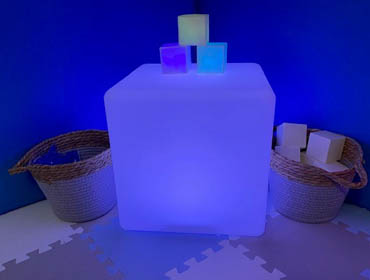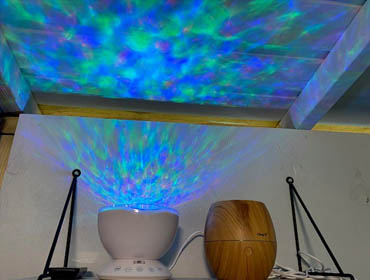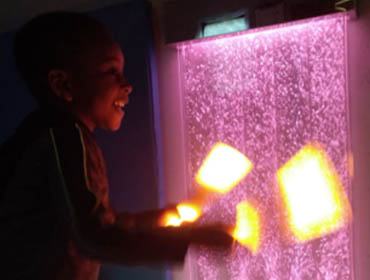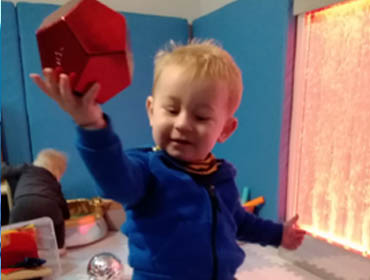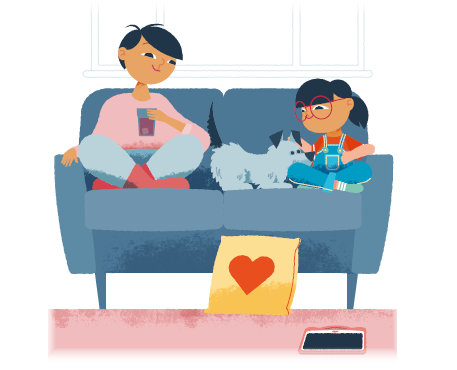Our Rooms
Acorns
4 months to 2 years
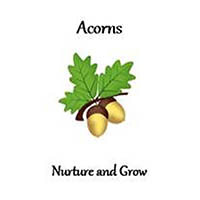
Our new Acorn room provides an environment that is both calm and welcoming where practitioners provide activities that ignite each child’s curiosity and wander. Our caring friendly staff will work closely with you on individual plans to suit your baby’s needs, ensuring that you are happy and confident in how your baby will be cared for.
We can cater for up to 12 children in this room with a one to three adult to child ratio. We have a separate sleep room, so if your little one needs a nap, they will be allocated their own cot and bedding. We also have facilities for preparing any needed bottles and a separate nappy changing area.
Our Acorns have direct access to their own outside space that offers various opportunities for messy, sensory play as well as activities to support gross and fine motor skills. At Tree Tots Day Nursery, we will go outside in all weathers believing that ‘there is no such thing as inappropriate weather just inappropriate clothing’.
Saplings
2 to 3 years
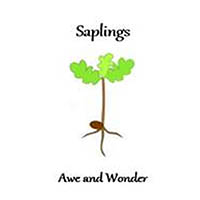
Our Saplings room is designed for our 2 to 3 year olds and is packed full of fun and exciting activities. We want our children to investigate and test out their ideas through play based on their individual interests.
Our Saplings also have direct access to their own outside play space where they can play in our mud kitchens, investigate the cause and effect of water using the pipes and tubes or create role play scenarios using their imagination.
During their time in our Saplings room we aim to offer each child a term completing Forest School type activities. Before each block of sessions begins, we will invite parents in to talk about what we want to offer, how this will be achieved and share with you the planning for each child’s woodland experience. We would also love it if any of the parents could come along and volunteer for as many woodland sessions as they can.
Forest School Foragers
Ranges from 2 to 5 years

From the age of 2 years old Tree Tots children will take part in a six-week forest school programme, on a rotation basis. Sessions will run Monday to Friday from 9:30 till 3:30, 2-3 years will do AM and PM sessions and the 3-5 years will complete a whole day in our designated forest school area.
During the programme children will be provided with an array of learning opportunities and experiences that they would not necessarily have access to within the indoor environment. Children’s learning will be presented in a learning journal book, that will go home weekly so that you can see what your child has been doing during their sessions and this can also be used by you to communicate or add to.
On a Friday there will be an activity provided for parent and child to do together over the weekend, that will be based on the child’s current interest, reflect, and extend on what they have been learning within the sessions, enabling parents/carers/siblings to be involved in the child’s forest school learning.
Please see our Forest School 6-week programme in the
Download Library.
Oaks
3 to 5 years
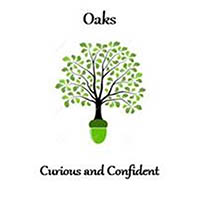
Our Oaks Room provides the children with a stimulating enriched learning environment where we aim to unlock the potential in every child. In this room we can cater for 24 children with a one to six adult to child ratio, this is a lower ratio than recommended by the statutory requirements of one adult to every eight children as we feel that this works better for our children.
We will aim to spend as much time as possible out in the woods as we believe in all children’s right to play, the right to access the outdoors. To take part in risk taking activities that teaches the children all about their emotions and how to cope with these, all the skills they will need to have when they start their school journey.
We promote the Forest School ethos, some of the activities that the children will take part in once they are ready and confident include;
Building bug hotels
Working with clay
Potion making
Flora and forna identification
Team working
Den building
Potato peeler whittling
Cooking over a camp fire
Seedlings Sensory Den
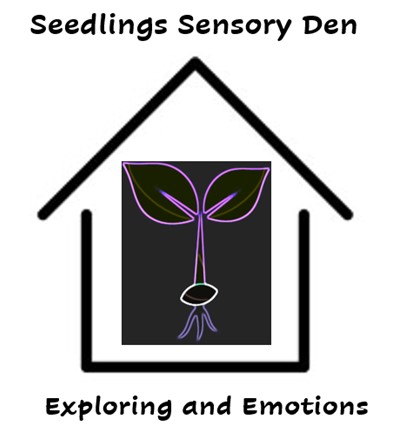
At Tree Tots we have our very own sensory den, each age/room have allocated times to use the den and it is used for 20-minute sessions:
(Mobile users please use the scroll bar below to reveal columns)
Room
Time
A sensory room is a space designed to help an individual with sensory processing, to learn to regulate their brain’s negative reactions to external stimuli by developing coping skills for these experiences.
Benefits of a sensory room
1. Sensory stimulation
Encouraging the user to engage with and explore the environment can have positive effects on their ability to understand, react and interact with the larger world around them.
2. Enhance learning through play
Sensory rooms for children should be designed with learning and fun in mind. Sensory play helps children to develop their senses, encourages problem solving and can build nerve connections in the brain. Sensory stimulation also engages different areas of the brain, helping children absorb and retain more information.
3. Improve balance, movement and spatial orientation
Sensory rooms can help develop users’ visual processing abilities as well as their fine and gross motor skills, facilitating day-to-day living. This is particularly beneficial for individuals with physical difficulties or Cerebral Palsy.
4. Develop communication skills
For some individuals, particularly those with autism spectrum disorder, both verbal and non-verbal communication is a challenge. Interactive sensory rooms can help to engage withdrawn individuals, and sensory equipment that focuses on sound can be especially helpful in encouraging vocalisation.
5. De-stress
Sensory environments can be highly absorbing, providing a moment of comfort and calm for overactive and distressed individuals. Similarly, the safe and controlled nature of a sensory room can help withdrawn individuals feel comfortable enough to interact with their surroundings.
6. Improve focus
Some individuals find it difficult to focus. In fact, this is a common trait for those with ADHD. Sensory equipment is designed to help users concentrate on the activity in hand and, what’s more, the atmosphere of a well-designed sensory room should help to enhance focus. This is an important skill for children to develop so they can cope with real-world environments where calm and concentration is key.
7. Promote socialisation
A great sensory room benefit is that it can be used by individuals on their own or in groups. Using a sensory room with others can help to promote socialisation skills in a safe, calm and stress-free environment. If you’re designing a sensory room, it’s great to consider how you can cater to the needs of a group and encourage interaction between users. Group sensory rooms can also help users understand cause-and-effect, for example how their decisions or movements may affect others.
